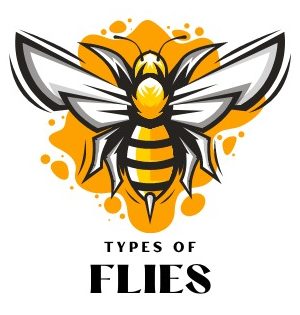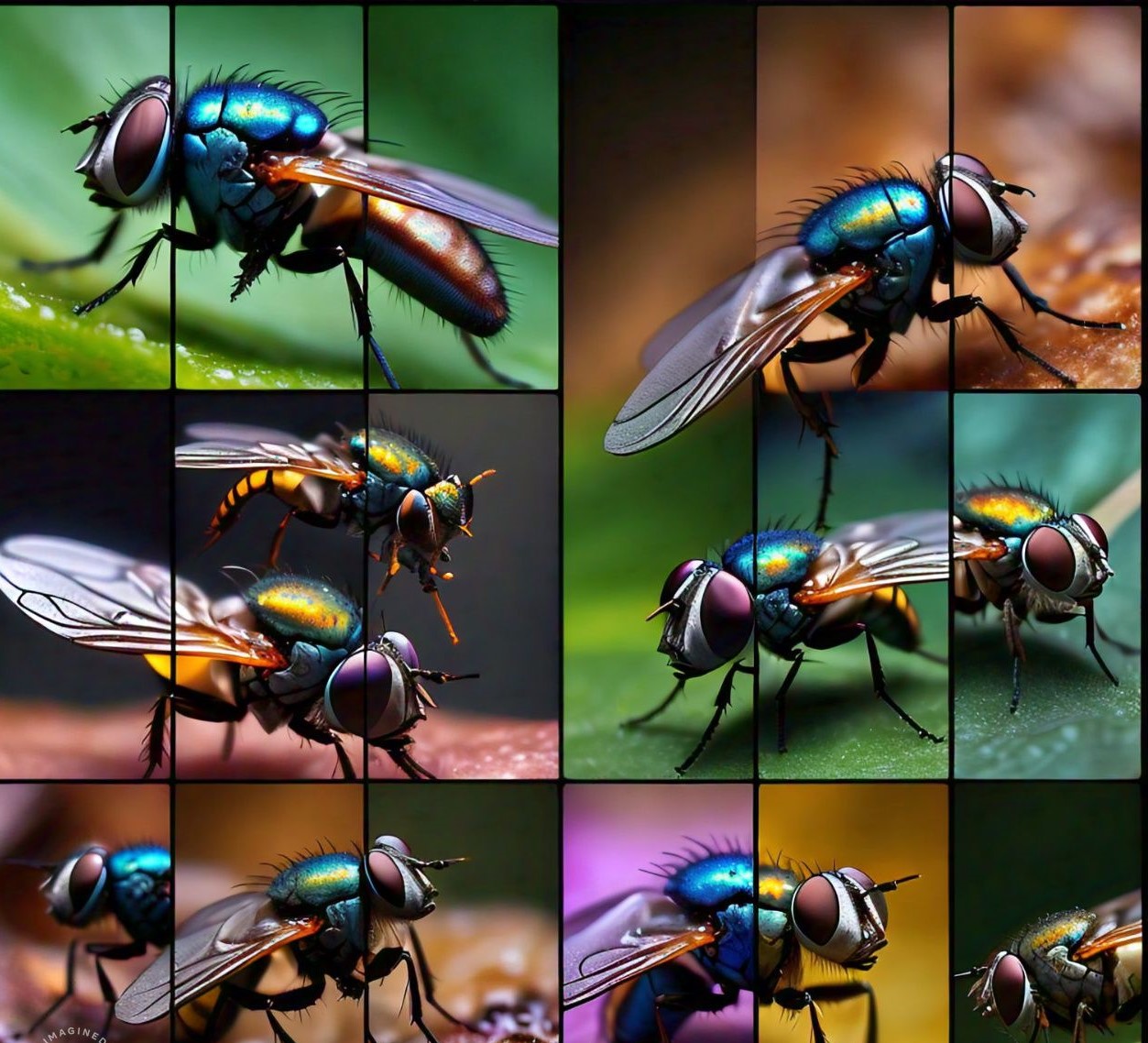The Unbeatable Guide to the Flies and How to Instantly Identify Them
Here we deal with the Most Common Names of Flies. Flies are some of the most intriguing and diverse insects you’ll encounter, each with its own unique characteristics and ecological role. Whether you’re an insect enthusiast, a homeowner striving to maintain a clean environment, or someone who simply wants to know more about the buzzing creatures around you, this guide will empower you to easily identify the 15 most common types of flies.
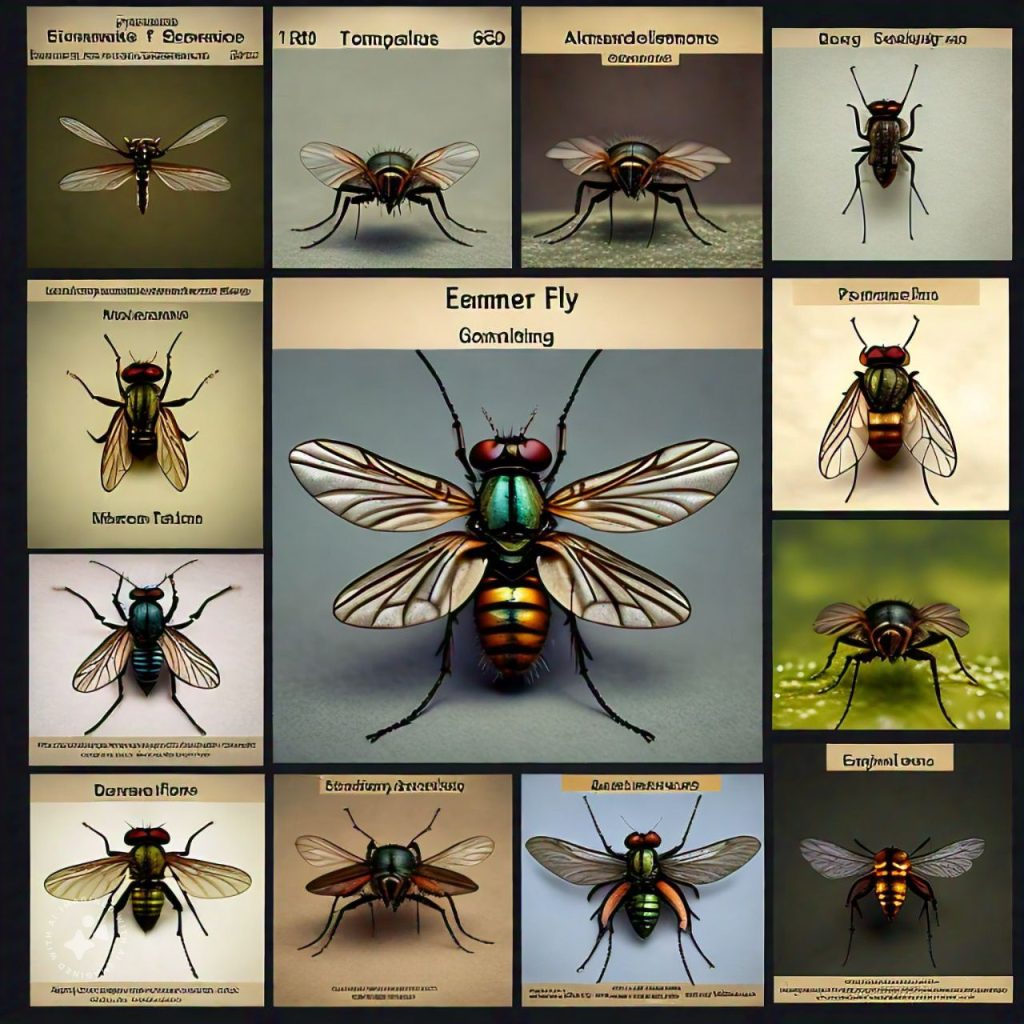
1. House Fly: The Everyday Visitor
The House Fly (Musca domestica) is undoubtedly the most familiar fly to many. Found in almost every corner of the world, these resilient insects are known for their persistence in seeking out food sources in human dwellings. Their grayish-black bodies and distinctive red eyes make most common names of flies easy to spot.
Identification Tips:
- Look for a grayish-black body with four dark stripes on the thorax.
- They are about 1/4 inch long with a slightly hairy appearance.
Pro Tip: Regularly clean food spills and keep your trash bins tightly sealed to minimize house fly infestations.
2. Fruit Fly: The Tiny Invader
Fruit Flies (Drosophila melanogaster) may be small, but they can be a big nuisance, especially in kitchens. Attracted to fermenting fruits and vegetables, these tiny tan flies with red eyes are most common names of flies often seen hovering around ripened produce.
Identification Tips:
- Look for a small, tan-colored body with bright red eyes.
- They are typically 1/8 inch long, making them one of the smallest flies you’ll encounter.
Pro Tip: Store fruits in the refrigerator and dispose of overripe produce to keep fruit flies at bay.
3. Blow Fly: The Metallic Marvel
Known for their vibrant metallic colors, Blow Flies (Calliphoridae) are often associated with decaying matter. Their shiny blue, green, or bronze bodies make them stand out.
Identification Tips:
- Look for a metallic body, often blue or green.
- They range from 1/4 to 1/2 inch in size and have large, noticeable wings.
Pro Tip: Remove animal carcasses and manage garbage properly to prevent blow fly infestations.
4. Horse Fly: The Powerful Biter
Horse Flies (Tabanidae) are infamous for their painful bites. These large, most common names of flies, strong flies are often found near bodies of water and are known for their ability to bite through clothing.
Identification Tips:
- Large and robust with a dark body and bright green or purple eyes.
- They can grow up to 1 inch long, making them one of the larger fly species.
Pro Tip: Use fly repellents when near water bodies to avoid horse fly bites, especially during warm weather.
5. Cluster Fly: The Quiet Invader
Cluster Flies (Pollenia rudis) are often mistaken for house flies but have a slower, more lethargic flight pattern. These flies most common names of flies tend to gather in large numbers inside homes during colder months, seeking warmth.
Identification Tips:
- Dark gray with golden hairs on the thorax.
- About 1/4 to 3/8 inch long, slightly larger than house flies.
Pro Tip: Seal cracks and gaps around windows and doors to prevent cluster flies from entering your home.
6. Drain Fly: The Tiny Moth-Like Creature
Also known as moth flies, Drain Flies (Psychodidae) are often found in moist environments like drains and sewage systems. Their fuzzy appearance and small size make them most common names of flies.
Identification Tips:
- Fuzzy, moth-like wings with a gray or brown color.
- Tiny, about 1/8 inch in size.
Pro Tip: Regularly clean drains and fix leaks to prevent drain fly breeding.
7. Stable Fly: The Biting Menace
Stable Flies (Stomoxys calcitrans) are often mistaken for house flies but are distinguished by their painful bites. These flies are a common problem in stables and farms, feeding on the blood of animals.
Identification Tips:
- Look for a gray body with a checkered abdomen and long piercing mouthparts.
- They are about 1/4 inch long.
Pro Tip: Maintain clean and dry areas in barns and stables to reduce stable fly populations.
8. Flesh Fly: The Rapid Breeder
Flesh Flies (Sarcophagidae) are large, gray flies with a distinctive checkerboard pattern on their abdomen. They are typically found near decaying meat or garbage, where they lay their eggs.
Identification Tips:
- Look for a gray body with a black checkerboard pattern on the abdomen.
- They are larger than house flies, typically around 1/2 inch long.
Pro Tip: Properly dispose of waste and clean up after pets to prevent flesh flies from breeding nearby.
9. Black Fly: The Persistent Biter
Black Flies (Simuliidae) are tiny, dark flies known for their persistent and painful bites. They are often found near fast-flowing streams and rivers and are most common names of flies.
Identification Tips:
- Small, dark body with a humpbacked appearance.
- They are about 1/8 inch long.
Pro Tip: Use insect repellent and wear protective clothing when near rivers or streams during the black fly season.
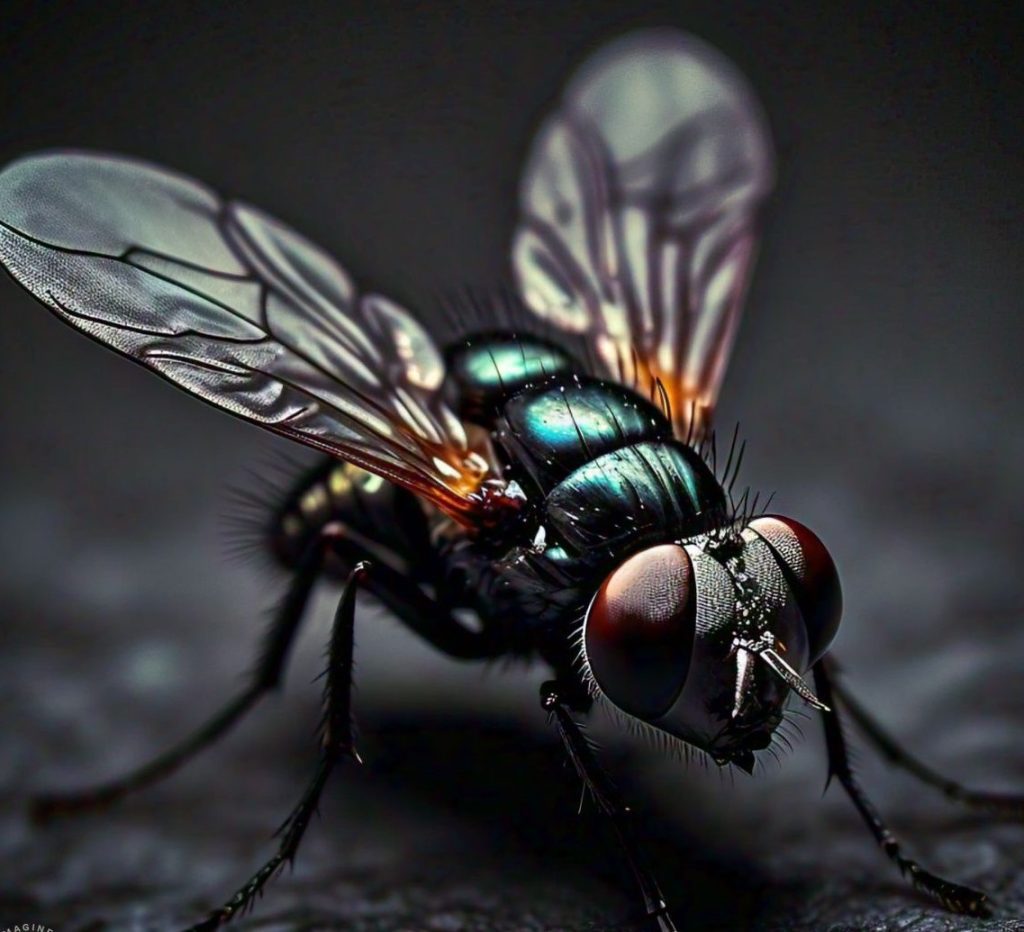
10. Deer Fly: The Elegant Predator
Deer Flies (Chrysops) are smaller than horse flies but share the same painful biting habits. Their patterned wings and colorful eyes make them one of the more visually striking flies.
Identification Tips:
- Look for brown or black bodies with patterned wings and bright green or yellow eyes.
- About 1/4 inch in size.
Pro Tip: Avoid wooded areas during peak deer fly season or use insect repellent to protect yourself.
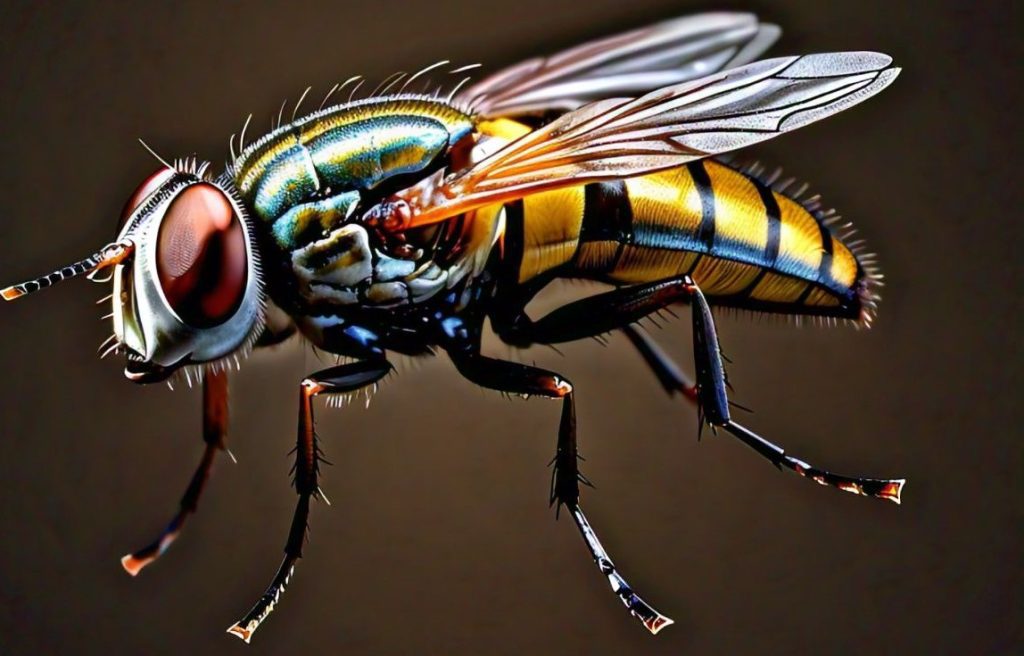
11. Sand Fly: The Tiny Terror
Sand Flies (Phlebotominae) are tiny, hairy flies that thrive in sandy or desert environments. They are notorious for transmitting diseases like leishmaniasis through their bites.
Identification Tips:
- Tiny, yellowish, hairy body.
- About 1/16 inch in size, making them one of the smallest biting flies.
Pro Tip: Use fine mesh screens and insect repellent when in sandy regions to prevent sand fly bites.
12. Tsetse Fly: The African Vector
Tsetse Flies (Glossinidae) are large, biting flies found in sub-Saharan Africa. They are known for transmitting sleeping sickness to both humans and animals most common names of flies.
Identification Tips:
- Large, brown body with a long proboscis.
- About 1/2 inch in size.
Pro Tip: When traveling to tsetse fly regions, wear protective clothing and use insect repellent.
13. Bot Fly: The Parasite
Bot Flies (Oestridae) are known for their parasitic larvae, which develop inside the bodies of mammals, including humans. Their robust bodies and buzzing flight make them easily recognizable.
Identification Tips:
- Large, stout body, often with a brown or black color.
- About 1 inch long.
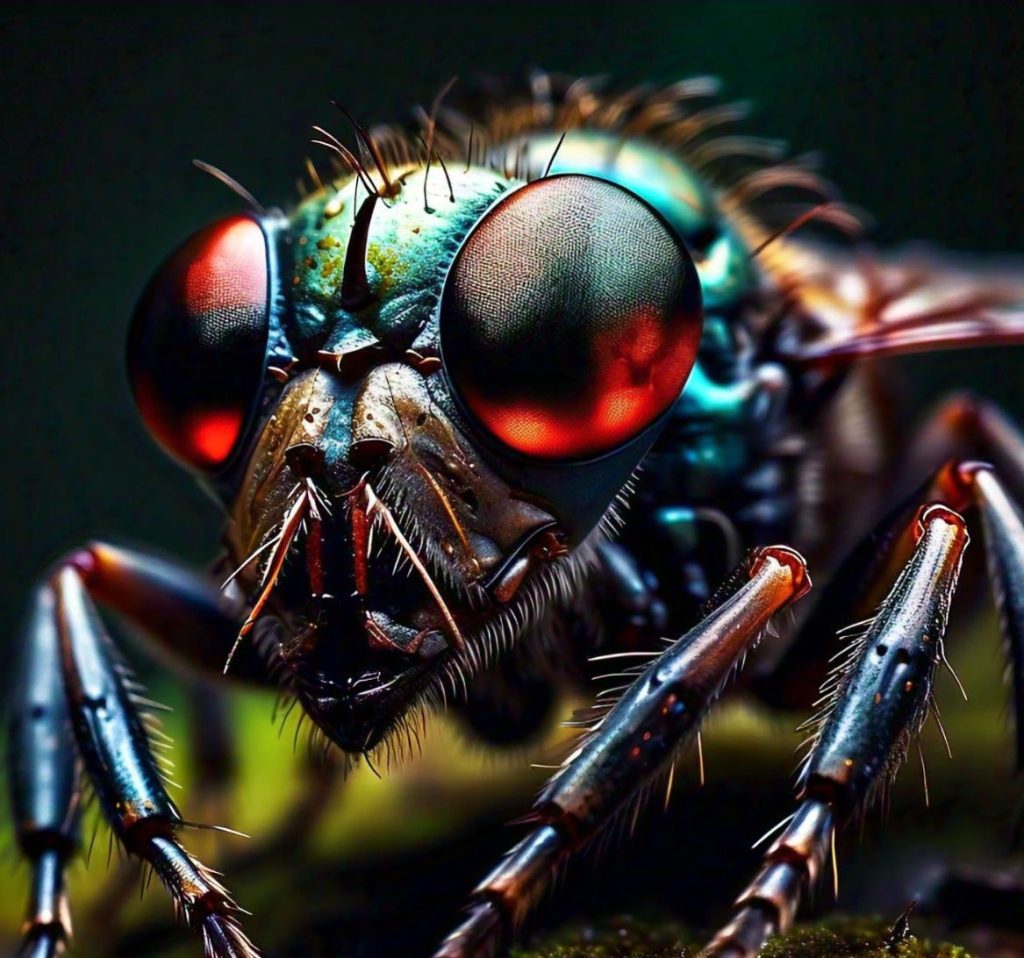
Pro Tip: If you suspect a bot fly infection, seek professional medical treatment for safe removal.
14. Crane Fly: The Gentle Giant
Often mistaken for large mosquitoes, Crane Flies (Tipulidae) are harmless and do not bite. They are commonly seen in gardens and around outdoor lights during the night.
Identification Tips:
- Long, slender legs with a delicate, brown or gray body.
- Wingspan up to 2.5 inches, making them one of the largest flies.
Pro Tip: Crane flies are beneficial to the ecosystem, so there’s no need for control measures.
15. Bee Fly: The Fuzzy Mimic
Bee Flies (Bombyliidae) resemble bees due to their fuzzy bodies and hovering flight. However, they are harmless and feed on nectar, playing a role in pollination.
Identification Tips:
- Fuzzy, stout body, typically brown or black.
- About 1/4 inch in size.
Pro Tip: Encourage bee flies in your garden to support pollination efforts.
Expert Tips for Fly Control and Prevention
Managing flies doesn’t have to be a challenge. Here are some expert tips to keep your environment fly-free:
- Cleanliness is Key: Regularly clean surfaces, dispose of waste properly, and store food in sealed containers to prevent attracting flies.
- Seal Your Home: Ensure windows, doors, and other entry points are properly sealed to keep flies out.
- Use Natural Repellents: Essential oils like eucalyptus, peppermint, and lavender are known to repel flies effectively.
- Install Fly Traps: Place fly traps in strategic locations around your home or garden to capture and control fly populations.
Conclusion
With this ultimate guide, you’re now equipped to identify and understand the 15 most common types of flies. By recognizing these species and implementing effective prevention strategies, you can maintain a fly-free environment and enjoy a healthier, more pleasant living space. Remember, knowledge is power, and now you have the tools to manage these buzzing visitors with confidence.
